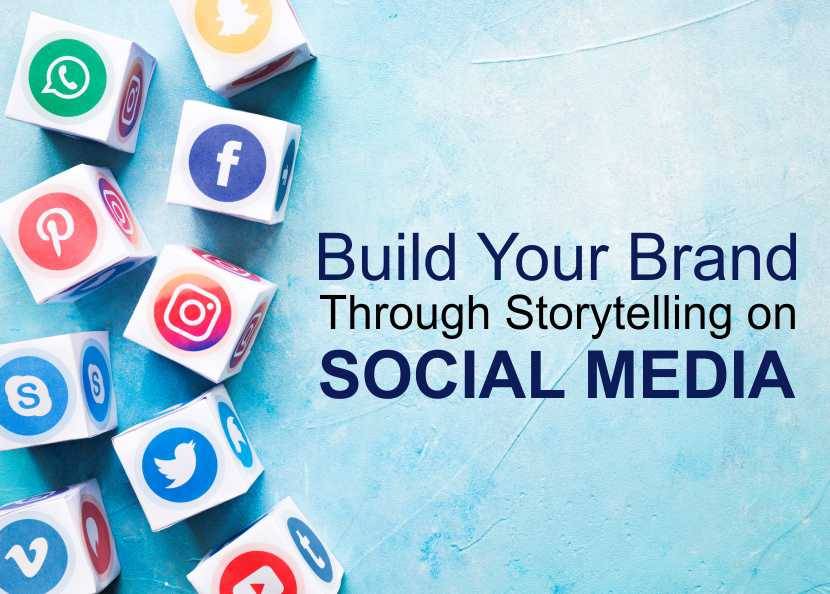Build Your Brand Through Storytelling on Social Media

I remember my favorite childhood
story – Alexander and the Terrible,
Horrible, No Good, Very Bad Day. Of course, many more stories have captured
my attention since then. And we all like a good story.
Stories have now crept into
marketing and advertising with increasing frequency. If you still watch
television, for example, you have probably seen stories of Progressive
Insurance Company’s Flo, or Afleck’s Duck, or Geico’s gecko. They even have
their own social media pages.
Speaking
of Social Media
Most of us have personal media
pages with news feeds that are updated almost minute-by-minute. When you access
your page, you scroll down, probably read short posts from friends and family.
But then come all of those ads –
if you have searched for items online; if you have accessed a website looking
at products or services, all of a sudden you are inundated with their marketing
posts. How do you feel about that?
Chances are, you find them
irritating and a bit intrusive. You scroll past them, often choose to hide them
and check those boxes so you won’t see them again.
Don’t be like those advertisers.
Don’t be that company that irritates its contacts.
You can bring something fresh to
the table. You can use storytelling to engage your contacts and leads. Tell
stories rather than advertise. Let your brand be the one that prefers to
entertain, inspire, and occasionally educate through storytelling. You can
still establish brand awareness but in an enjoyable way.
How-To
Guide for Storytelling
1. Understand
the elements of a story
Every story you have read has
certain elements. Before you craft your story, jot down the elements. This will
provide an outline for what you will ultimately produce.
●
People in a situation of some
sort. There may be a problem they need to solve, there may be a conflict of
some sort, or there may simply be an experience that they are relating through
some “journey” they took.
●
A plot. This is the sequence of
events as they occur in that story
●
A conclusion or a resolution. The
problem is solved; the conflict is resolved, or the “journey” ends with some
type of comment on how that ending came to be.
Keep these three elements in mind
as you think about the stories you have to tell that relate to your brand.
2. Who are Your
Characters?
You may have a single character
like Flo from Progressive and minor characters that “support” the story.
The character may be you as the
founder of your company, telling your story or something else about yourself.
The characters may be your amazing
team in your work setting or involved in some event
The character may be a customer
who is thrilled with your product or service.
3. What is the
Plot Line?
You need to have a point to the
story, and that point is made through the plot. Jot down the plot sequence.
Suppose you are telling the story
of why and how you founded your company. List the points you will include in
that plot.
Perhaps your company has
participated in an event. What was the event? How did you make the decision to
participate? What was your participation from beginning to end?
If you are focusing on a customer,
how did that customer come to you? What problem was the customer looking to
solve through your product or service?
4. What was the
Ending?
Is your business successful? Did
the event end well? How did your team feel about its participation? Is the
customer happy with the product or service purchased?
Some
Examples of Brand Stories
Headbands
of Hope: A For-Profit Company with a Cause

Jessica Ekstrom,
following a college internship, determined to go into a business that would in
some way serve children battling cancer. She founded Headbands of Hope, a
company that originally sold headbands with a one-to-one business model.
For every headband sold, one would be donated to a child who has lost her hair as a result of cancer treatment, and $1 would be donated to children’s cancer research. The producing line has expanded, but the original mission has remained the same. The products are also now sold in retail stores. The stories of how the company was founded, of children who have been recipients of headbands,
A typical Facebook post:

There is a strong human need to “do good,” and any company that can
support a worthy cause will have lots of stories to tell about that support.
Red Bull –
Extreme Energy and Sports
Red Bull has many stories to tell, primarily
because it sponsors so many extreme sporting events.
And this example also shows that stories are
often told via video. This particular post got 48m likes:

ModCloth –
A Retro Millennial Women’s Clothing Line
Here is a site that heavily focuses on customer
stories. From this, you can see that stories need not be long – they can be
short snippets of a customer’s experience:

What stories might your customers have that you
can post? Probably many.
Story
Marketing Strategies
Your brand has its own stories. Start developing
a list of them as well as ideas for future stories.
Here are the types of stories that will
personalize your brand, demonstrate the value of your product or service, and
build trusting relationships with consumers.
Your
Customer Testimonials
No one really wants to read customer
testimonials that are published on websites. Consumers are suspicious of them.
But they will not be suspicious of a
“testimonial” that is accompanied by a photo or video of a customer telling
his/her story. This is powerful social proof, especially considering that about
75% of consumers do listen to word-of-mouth recommendations.
Solicit stories from your customers, and provide
an incentive for them doing so.
Featuring
Your Team
This was mentioned above, and, again, this type
of storytelling humanizes your brand. People relate to other people far more
than they do to still images of products.
Group shots all by themselves tell a story
without any words – this is why Instagram is utilized by so many brands. It is
a visual platform, and consumers prefer visuals to words.
Featuring
Yourself
You don’t always have to tell stories about your
founding. Give followers a peek into your “other” life – hobbies, activities,
your dog, etc.
You begin to look like everyone else, and that’s
a good thing.
Types of
Content for Social Media Storytelling
You have two options – text and visual.
Text
If you plan to use text in your storytelling,
then you need to be a creative storyteller. It’s tough to hold engagement with
words. You probably know this, at least from the boring stories and novels you
may have been forced to read as a student.
Journalists are good storytellers. They know how to capture attention with stunning headlines and ledes, by breaking up stories into little chunks and by covering all of the above-mentioned elements.
Visuals
Here, you can tell stories in such a large
number of ways.
1. A single photo can tell a poignant
story. Think of some of the artwork you have seen that impacted you. Photos can
do the same.
2. A collage of photos can tell a
longer story; so can a slide show
3. An infographic can tell a story that
needs data or other factual information
4. Videos are obviously a great way to
tell a story, and consumers actually like informal ones better than those
professionally produced. There are also professional videographers that can
make your videos appear quite informal, featuring you, your team, or a
combination of photos/videos that your customers may have submitted.
Become a
Storyteller
Creating engaging stories is actually fun. And as you get more accustomed to crafting those tales, you will come to be a better storyteller and enjoy it more.
Get busy identifying those
things about you, your brand, your team, your customers, and your
product/service that can be woven into engaging stories.

Kristin Savage
Author
Bio:
Kristin Savage nourishes, sparks and empowers using the magic of a word. Along with pursuing her degree in Creative Writing, Kristin was gaining experience in the publishing industry, with expertise in marketing strategy for publishers and authors at StudyClerk. You can find her on Facebook.














